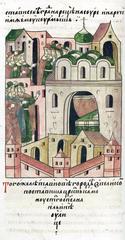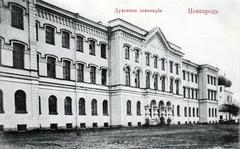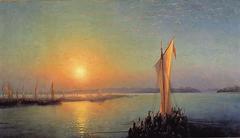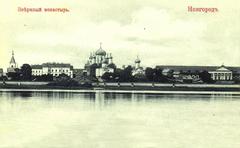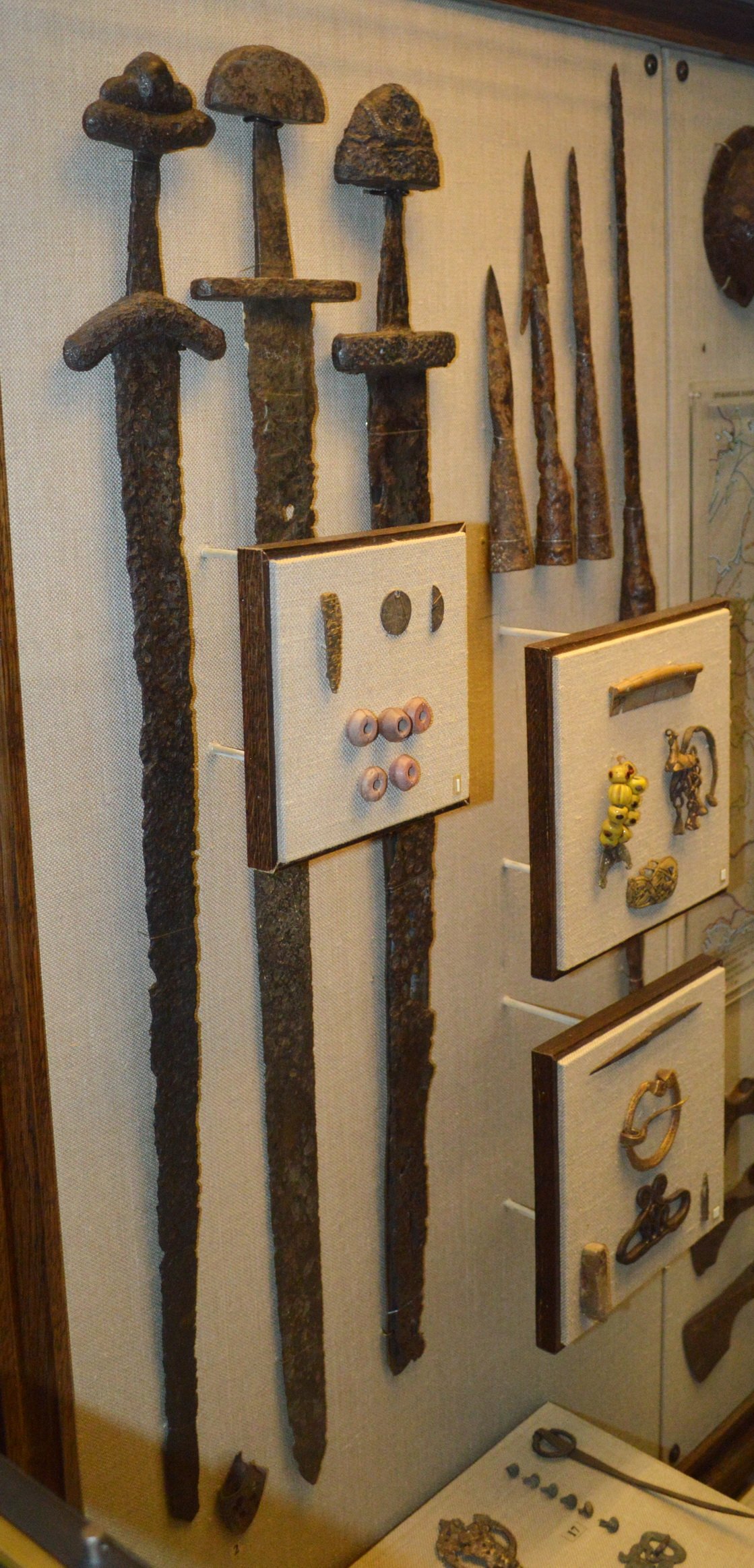
Rurikovo Gorodische Visiting Guide: Hours, Tickets, and Tips
Date: 24/07/2024
Introduction
Rurikovo Gorodische, also known as Rurik’s Hillfort, stands as a monumental testament to the rich historical and cultural fabric of Russia. Situated approximately 2 kilometers south of Veliky Novgorod, this archaeological site is teeming with remnants of a past that dates back to the 8th century. Initially established by the Ilmen Slavs, it was later influenced by the arrival of the Vikings, who referred to it as Holmgård, or “the settlement on the islands” (Spotting History). This site is particularly renowned for the Varangian Summoning in 862, an event documented in the “Tale of Bygone Years,” which marked the beginning of the Rurik Dynasty (Travel All Russia).
Over the centuries, Rurikovo Gorodische evolved into a vital political and economic hub, governing the Ilmen region and serving as a crucial link in the trade routes between the Varangians and the Greeks (Visit Novgorod). The site encompasses significant architectural ruins, including the Cathedral of the Annunciation, built in 1103, and a treasure trove of artifacts that provide deep insights into the cultural and religious practices of its ancient inhabitants (Follow the Vikings).
Today, Rurikovo Gorodische is a part of the Novgorod World Heritage site, attracting historians, archaeologists, and tourists from around the globe. Its enduring legacy as the cradle of Russian statehood and its rich tapestry of Slavic and Scandinavian interactions make it a must-visit destination for anyone interested in the roots of Russian civilization (Wikipedia).
Table of Contents
- [Introduction](#introductionintroduction)
- [Historical Background](#historical-backgroundhistorical-background)
- [Origins and Early Development](#origins-and-early-developmentorigins-and-early-development)
- [Viking Influence and the Varangian Summoning](#viking-influence-and-the-varangian-summoningviking-influence-and-the-varangian-summoning)
- [Political and Economic Significance](#political-and-economic-significancepolitical-and-economic-significance)
- [Architectural and Archaeological Highlights](#architectural-and-archaeological-highlightsarchitectural-and-archaeological-highlights)
- [Transition to Veliky Novgorod](#transition-to-veliky-novgorodtransition-to-veliky-novgorod)
- [Legacy and Modern Significance](#legacy-and-modern-significancelegacy-and-modern-significance)
- [Visitor Information](#visitor-informationvisitor-information)
- [Tickets](#ticketstickets)
- [Opening Hours](#opening-hoursopening-hours)
- [Travel Tips](#travel-tipstravel-tips)
- [Nearby Attractions](#nearby-attractionsnearby-attractions)
- [Accessibility](#accessibilityaccessibility)
- [FAQ](#faqfaq)
- [Conclusion](#conclusionconclusion)
- [Sources](#sourcessources)
Historical Background
Origins and Early Development
Rurikovo Gorodische, also known as Rurik’s Hillfort, is an archaeological site located approximately 2 kilometers south of the current city center of Veliky Novgorod, Russia. The site is situated across from the Yuriev Monastery, where the Volkhov River flows out of Lake Ilmen. The settlement’s origins trace back to the 8th century when it was initially established by the Ilmen Slavs as a fortress with a wooden wall on the shaft (Spotting History).
Viking Influence and the Varangian Summoning
The 9th century marked a significant transformation for Rurikovo Gorodische with the arrival of the Vikings. According to Norse sagas, the Vikings referred to the settlement as Holmgård, meaning “the settlement on the islands.” By the 9th and 10th centuries, it had evolved into a defended market center occupied by both Slavs and Scandinavians, exporting craft goods widely (Follow the Vikings).
The most notable event in the site’s history is the Varangian Summoning, a legendary episode in which the local Slavic tribes invited the Varangian warlord Rurik to rule over them in 862. This event is documented in the “Tale of Bygone Years” and is considered a foundational moment in Russian history, as Rurik established the ruling dynasty of the Kievan Rus, which remained in power until the 17th century (Travel All Russia).
Political and Economic Significance
Rurikovo Gorodische served as the residence of the princes of Novgorod and played a crucial role in the political and economic life of the region. The settlement was a key administrative and economic center, governing the entire Ilmen region. Its strategic location on the trade route from the Varangians to the Greeks facilitated its development into a bustling market hub (Visit Novgorod).
Architectural and Archaeological Highlights
The site of Rurikovo Gorodische covers an area of approximately four hectares and includes the ruins of several significant structures. One of the most notable is the Cathedral of the Annunciation, built by Prince Mstislav the Great in 1103 and reconstructed in the 14th century. This cathedral, along with the nearby St. George Monastery, provided a scenic and spiritual retreat for the rulers of Novgorod (Visit Novgorod).
Archaeological excavations have uncovered a wealth of artifacts, including amulets with runic inscriptions, which are now displayed in the museum in Novgorod. These findings provide valuable insights into the cultural and religious practices of the settlement’s inhabitants (Follow the Vikings).
Transition to Veliky Novgorod
By the late 10th century, the settlement of Rurikovo Gorodische began to be overshadowed by the development of Novgorod, which means “new city” in Old East Slavic. Novgorod quickly grew into a major political, economic, and cultural center, becoming the second most important city in the Kievan Rus after Kiev. The transition from Rurikovo Gorodische to Novgorod marked a significant shift in the region’s history, as the new city became the focal point of state, public, and religious life (Wikipedia).
Legacy and Modern Significance
The historical significance of Rurikovo Gorodische extends beyond its role in the early medieval period. The site is part of the Novgorod World Heritage site, recognized for its outstanding universal value. It continues to attract historians, archaeologists, and tourists interested in exploring the roots of Russian statehood and the early interactions between Slavic and Scandinavian cultures (Spotting History).
In the 19th century, the name “Rurikovo” was added to the site, influenced by legends that identified it as the capital of Rurik’s state. This renaming reflects the enduring legacy of Rurik and the historical importance of the site in the collective memory of the Russian people (Wikipedia).
Visitor Information
Tickets
Tickets for Rurikovo Gorodische can be bought at the entrance or online. Prices may vary, so it is advisable to check the official website or contact the local tourism office for the most up-to-date information.
Opening Hours
The site is generally open from 9 AM to 6 PM, but hours may vary depending on the season and holidays.
Travel Tips
The site is easily accessible by car, taxi, or public transportation from Veliky Novgorod. Visiting in the early morning or late afternoon can help you avoid the crowds.
Nearby Attractions
Don’t miss the Yuriev Monastery and the St. George Monastery, both of which offer rich historical and architectural insights.
Accessibility
The main pathways are accessible, but some areas might be challenging. It’s recommended to contact the site in advance to arrange for any special requirements.
FAQ
- What are the opening hours of Rurikovo Gorodische? The site is generally open from 9 AM to 6 PM, but hours may vary.
- How much are the tickets for Rurikovo Gorodische? Ticket prices vary, so check the official website or local tourism office for the latest information.
- What is the best time to visit Rurikovo Gorodische? Early morning or late afternoon are the best times to avoid crowds.
- Are there guided tours available at Rurikovo Gorodische? Yes, guided tours are available and can be booked in advance.
Conclusion
Rurikovo Gorodische stands as a testament to the rich and complex history of Veliky Novgorod and the broader region. From its origins as a Slavic fortress to its transformation into a Viking-influenced market center and its eventual overshadowing by Novgorod, the site encapsulates key moments in the early history of Russia. Its archaeological treasures and historical narratives continue to offer valuable insights into the cultural and political developments of ancient Rus, making it a must-visit destination for anyone interested in the roots of Russian civilization.


